Singapore Bicentennial
The issue from Singapore, mentioned in the last newsletter, on the occasion of the 200th anniversary of this city-state, deserves some further explanation.
Of course
Singapore exists much longer than these 2 centuries. Already in the year 1300 was spoken about the establishment of a city-state with the name "Temasek", what means as much as "City of the sea".
The that time king of the
Srivijaya empire, to which Temasek belonged, saw an animal appear from the see with the upper body of a lion, and the lower body of a fish. The population then started to call the city, built on 63 islands, mockingly "The lion city". Lion is Singa in Malay, and city is Pura. The "Sea-Lion" is from that moment on also the logo of the city and can be found in many forms. On the place where the king spotted the sea-lion is now the famous statue of this fish-predator that disrespectly functions as fountain.
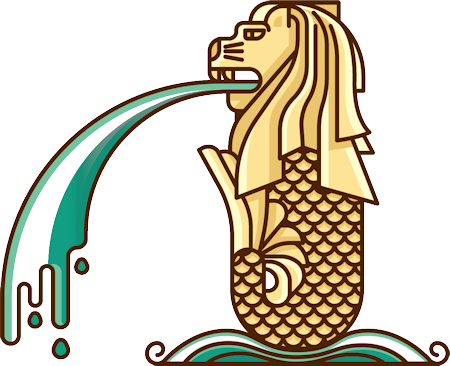
In 1819 the Englishman Sir Thomas Raffles came in Singapore and established a trading post for the English trade in Asia.

Sir Thomas Raffles
The history of Singapore is briefly depicted on the series of stamps issued on June 22nd. On the two First Local values we see the arrival of the natives on the islands, and on the Second Local value the earlier mentioned Sir Raffles is depicted who ushered in the colonial era.
On the stamps with a value imprint the recent history is depicted, with on the last stamp of $ 1.30 the future. This last stamp is printed with a special printing procedure: apart from the offset lithography that is used for all stamps this stamp is provided with the hotstamping procedure, which makes that the ink that is printed dry on the stamp feels slightly enheightened.
For us the stamp with a value of 90 ct is interesting, because with the theme "Independency" we see on this stamp a daddy with child riding a scooter, a vehicle often used in Singapore. This independency has been realized after a number of turbulent years on August 9th 1965.

For counter use these stamps have been printed in sheets of 10, and for the collector in a block with 2 rows of 5 stamps against a background that shows the map of the present Downtown Core.
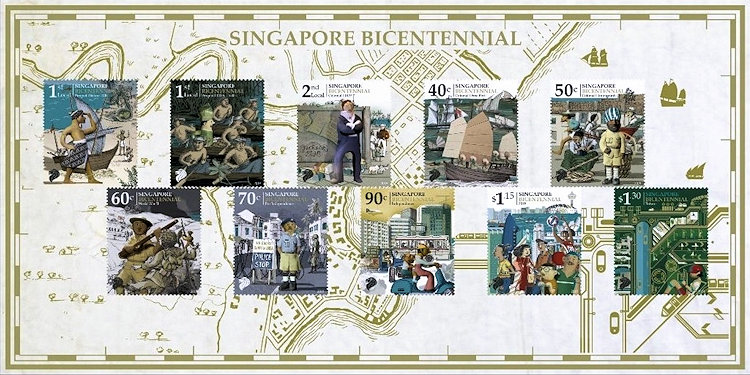
To print this block a special printing method is used: a special foil print. If you look at the block with the naked eye, you see everything that is printed, both the lithography and the foil print. But if you want to copy the block, some details of each stamp disappear. You would expect that all foil print would disappear but no, only a few details. Special.
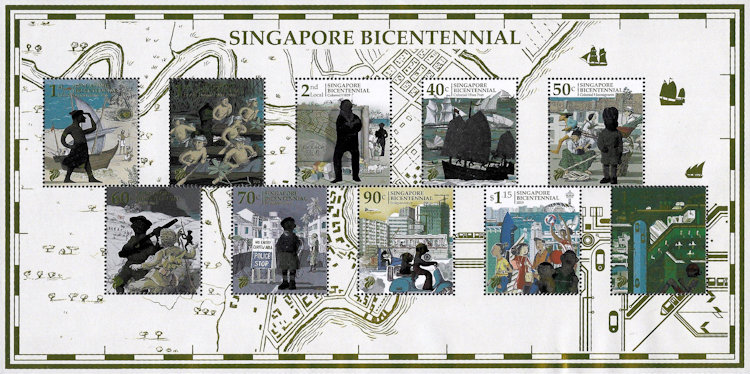
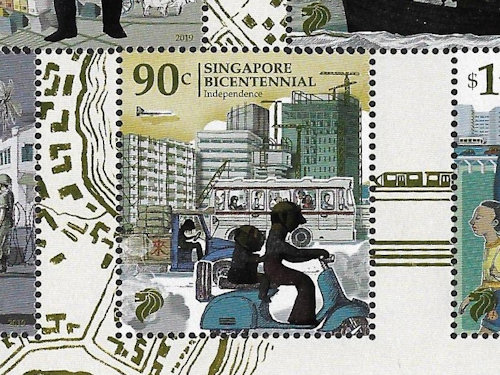
The block is packed in a large folder on which also a few scooters have been printed:
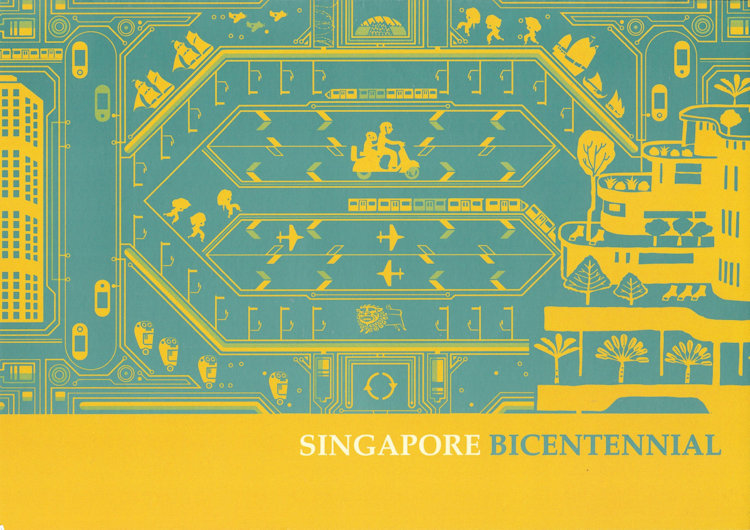
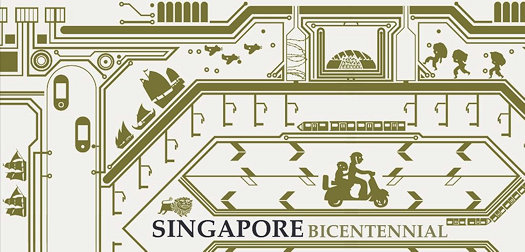
Especially for the regular orderers at Singapore Post an edition of 1000 non-perforated blocks has been made. Unnecessary to say these were already all ordered well before the day of appearance.

Thus, all in all a nice addition for our colleciton.
Hans de Kloet
Top - Back to former page - Home |








